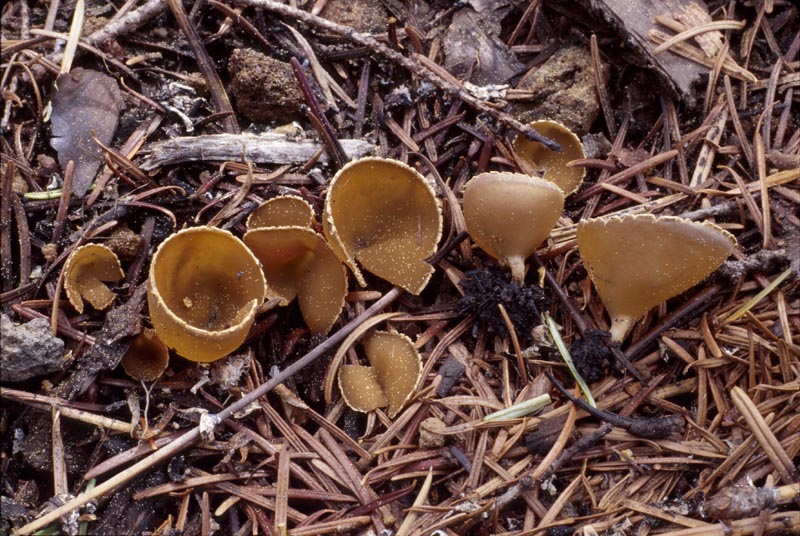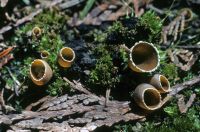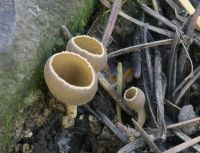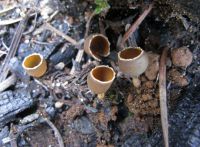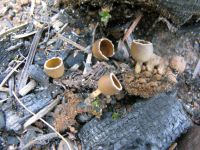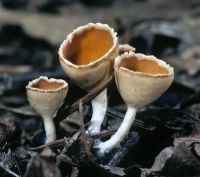Habitat: Occurs after conifer forest fires
Spores: The spores are smooth, ellipsoid, 11--18 x 6--9 µm, and do not contain prominent oil drops.
Conservation Status: Not of concern
The fruitbodies look like small goblets with reddish tan interiors, yellowish tan exteriors, and slightly ruffled, pale rims. A stipe usually is present but, at times, it can be rather short. G. vulcanalis (Peck) Saccardo is more yellowish tan in color, has larger spores (14--21 x 8--11 µm) without oil drops, and is found mostly in un-burned areas. Tarzetta cupularis (Linnaeus: Fries) Lambotte grows on soil or among mosses and has spores (19--23 x 10--15 µm) that contain two large oil drops. T. catinus (Holmskjold: Fries) Korf & J. K. Rogers (18--24 x 10--13.5 µm) is another soil-dweller, but with a longer stipe and larger cups (up to 2.5 cm (1 in.) across). Different mycologists interpret all of these species differently, so it is often very difficult to identify collections unambiguously or to understand their distributions.
PNW Herbaria: Specimen records of Geopyxis carbonaria in the Consortium of Pacific Northwest Herbaria database
CalPhotos: Geopyxis carbonaria photos

